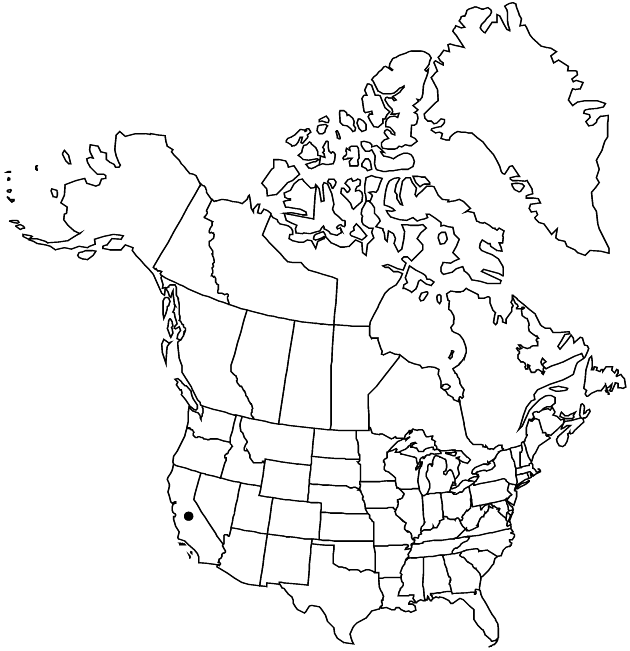Lorandersonia peirsonii
Sida 21: 1623. 2005.
Perennials, cespitose, 5–20 cm; with branched, woody caudices surmounting taproots. Stems (clothed with marcescent leaf-bases) glabrous, densely stipitate-glandular. Leaves: basal blades broadly spatulate, 30–80 × 12–25 mm; cauline blades oblong to linear, 28–42 × 7–11 mm, reduced distally; 1-nerved or 3-nerved, margins coarsely and irregularly serrate to (distal) nearly entire, stipitate-glandular, faces glabrous, stipitate-glandular. Heads radiate, usually borne singly, sometimes 2–4. Peduncles 8–24 mm. Involucres broadly campanulate, (14–) 19–28 × (12–) 14–20 mm. Phyllaries 19–31 (–44) in 3–4 series, 1-nerved or weakly 3-nerved, ± equal, margins eciliate; outer and mid green, oblong, 10–12 × 2–4.5 (–7) mm, foliaceous, apices obtuse to acute, faces stipitate-glandular; inner usually green, sometimes anthocyanic, linear, 10–12.5 × 1–2.5 mm, chartaceous proximally, margins scarious, fimbriate and/or stipitate-glandular distally, apices acute to acuminate, faces stipitate-glandular distally. Ray-florets 16–20; laminae elliptic, 6.5–8 × 1.5–2.5 mm. Disc-florets 44–63, barely exceeding involucres; corollas narrowly funnelform, 7.5–10.5 mm, lobes erect, 0.7–1.7 mm, lengths 1/10–1/5 corollas; anthers 3.3–3.8 mm; style-branch appendages subulate, 1.3–2.5 mm, stigmatic lines ca. 1.5 mm. Cypselae linear, 2.5–6 mm, 6–9-nerved, faces strigose to villous, often ± viscid; pappus bristles ± 30, brittle. 2n = 90.
Phenology: Flowering and fruiting early–late summer.
Habitat: Crevices of granitic outcrops, talus slopes, in alpine and subalpine communities
Elevation: 2900–3700 m
Discussion
Lorandersonia peirsonii is known only from the upper elevations of the central Sierra Nevada and from collections in the western Great Basin, in northeastern Fresno, northwestern Inyo, and southern Mono counties, California.
Selected References
None.
Lower Taxa
"fine" is not a number.
